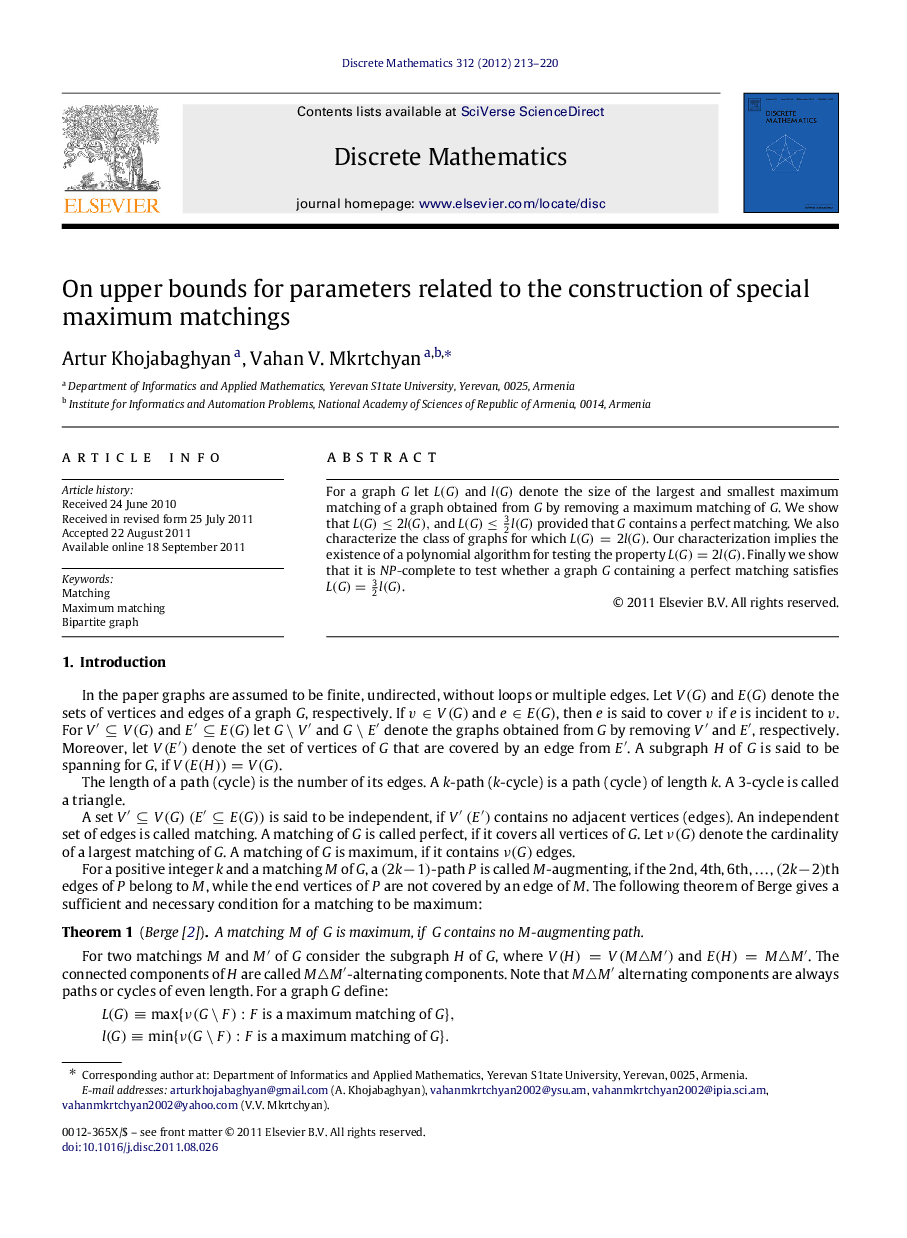| Article ID | Journal | Published Year | Pages | File Type |
|---|---|---|---|---|
| 4648493 | Discrete Mathematics | 2012 | 8 Pages |
Abstract
For a graph GG let L(G)L(G) and l(G)l(G) denote the size of the largest and smallest maximum matching of a graph obtained from GG by removing a maximum matching of GG. We show that L(G)≤2l(G)L(G)≤2l(G), and L(G)≤32l(G) provided that GG contains a perfect matching. We also characterize the class of graphs for which L(G)=2l(G)L(G)=2l(G). Our characterization implies the existence of a polynomial algorithm for testing the property L(G)=2l(G)L(G)=2l(G). Finally we show that it is NPNP-complete to test whether a graph GG containing a perfect matching satisfies L(G)=32l(G).
Related Topics
Physical Sciences and Engineering
Mathematics
Discrete Mathematics and Combinatorics
Authors
Artur Khojabaghyan, Vahan V. Mkrtchyan,
